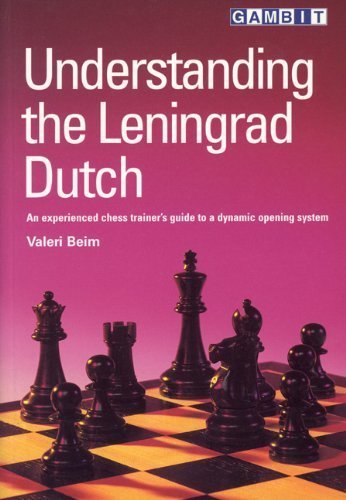The Leningrad System of the Dutch Defence is an interesting hybrid of the Dutch and the King’s Indian. For many years, it was viewed with some suspicion in view of the slight positional weaknesses created in Black’s position. However, in the 1980s dynamic new approaches were introduced by such players as Sergei Dolmatov, Evgeny Bareev, Mikhail Gurevich and especially Vladimir Malaniuk. These players showed how an active approach could compensate for these defects, and offer Black excellent winning chances. Since then, the Leningrad has been a popular and effective opening choice for players of all levels.
About the Author
Valeri Beim is a grandmaster who lives in Austria. He has won numerous tournaments and plays in the Austrian and German leagues. For many years, he was the head trainer at the chess school in Odessa (Ukraine), and he was also the trainer of the Israeli olympiad team.
Reviews
“At the time I was living in Israel I met played alongside Valery Beim in many tournaments. He was one of the most talented players I’ve come across with a deep understanding of chess, but often became nervous in practical play. Amongst his many strengths as a player was his superb handling of the Leningrad Dutch and I don’t recall seeing him lose with this opening. So when he wrote a book about this opening I had to get it and it’s as good as I expected it to be. … Highly recommended.” — Nigel Davies
“Understanding the Leningrad Dutch is recommended as an entertaining but still sufficiently theoretical introduction to a very popular opening.” — John Watson
“…Grandmaster Beim, now living in Austria, has formerly been a trainer with both the Odessa chess school in Ukraine and the Israeli Olympiad team. An impressive pedigree, which shines through the pages of this rather impressive book….. Good teaching usually involves homework, hence the closing chapter consists of 35 exercise positions taken from real games where Black has reached a position requiring formulation of a plan. The 12 pages of suggested solutions provide an excellent tutorial on decision taking, without the normal reassurance of forced variations typical of most chess test questions. Summary – highly recommended; if only all opening book authors followed Beim’s example!” — David Gillespie, WEEKEND CHESS
“Interestingly conceived, and apparently well executed, this a real insider’s guide to this opening which should be of interest even to strong players.” — Phil Adams



